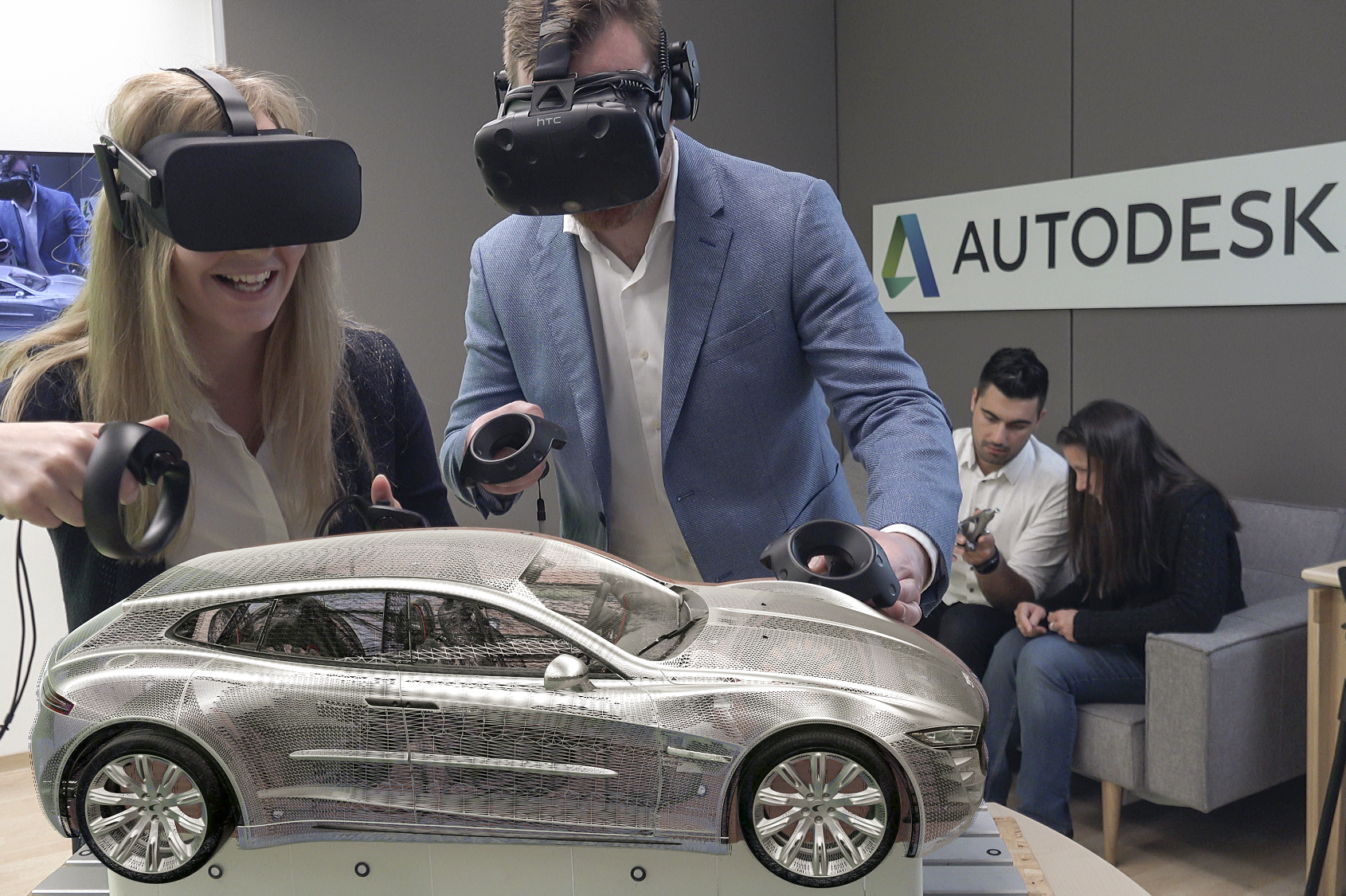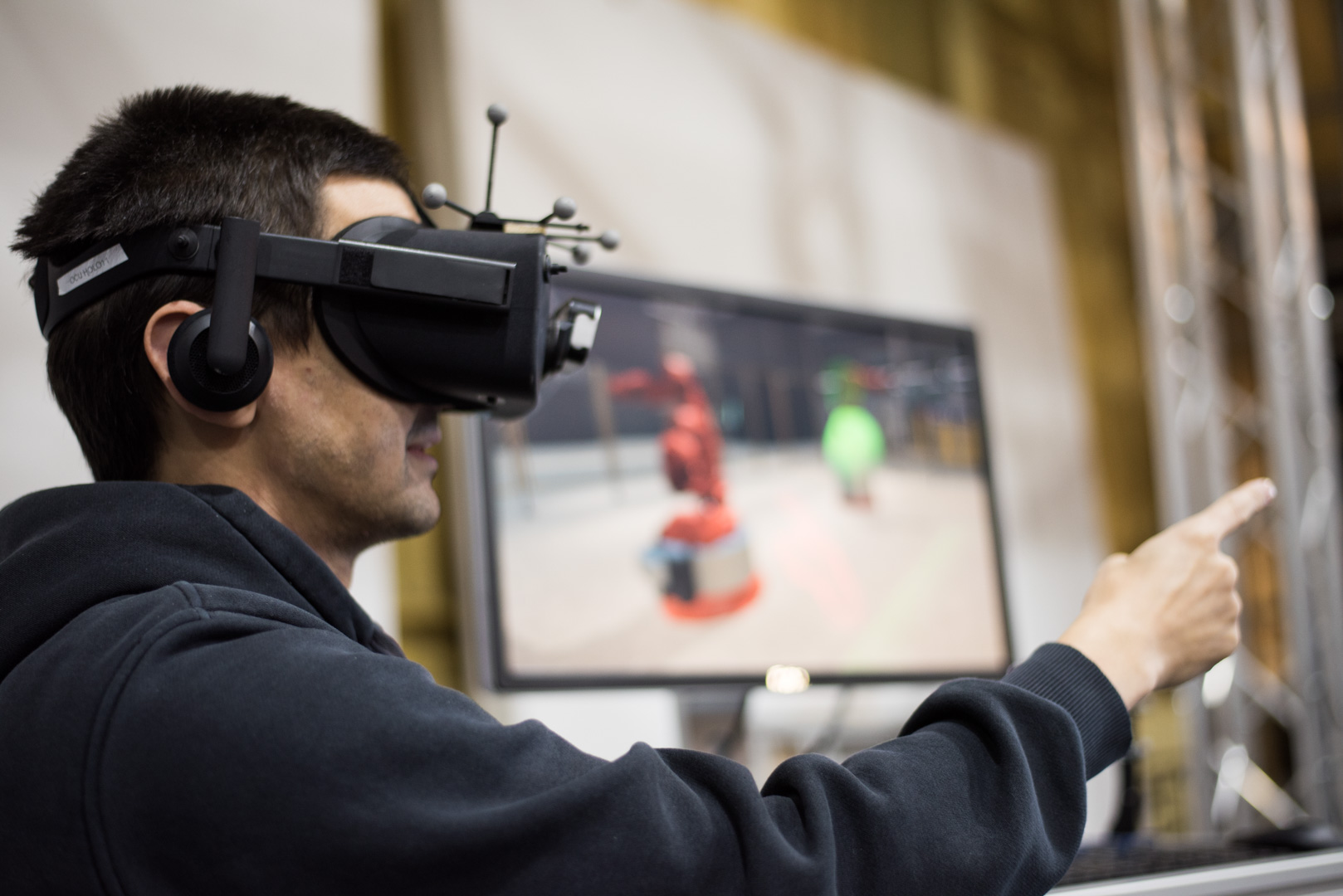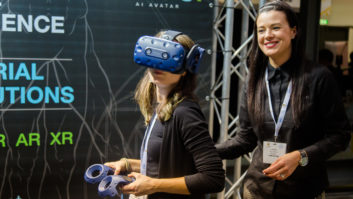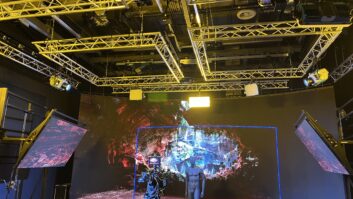
VR, AR and mixed reality content demand a variety of content creation software and display equipment. Steve Montgomery reports on how these technologies are evolving.
Computer gaming is by far the largest market for virtual and augmented reality technology, as games enthusiasts seize the opportunity to add greater realism and immersion to their hobby. Sales of the most common form of immersive device, the VR headset, have already reached 10 million units per year and are climbing rapidly. The technology is fully established and seems to be here to stay.
Its mass market appeal attracted the attention of industry giants and today companies like Samsung, Google, Microsoft, Sony and HTC are actively developing and promoting headsets and displays and working closely with content creators to develop applications that now cover a wide spectrum of domestic, leisure, commercial and educational sectors.
Several types of headset are available. The simplest is the cardboard enclosure designed to house a user’s smartphone; this is the type used in the UK by BT Sport to show last year’s Champions League Final to viewers at home. Slightly more robust and upmarket versions, including Samsung Gear and Google Daydream, perform the same job, but more stylishly. Then there are dedicated goggles containing integrated displays, like the popular HTC Vive and Oculus Rift that connect by an ‘umbilical’ wiring loom to a local computer. At the top of the range are fully fledged (and very expensive) wearable headsets that include an inbuilt computer as well, for example the Microsoft Hololens and Daqri industrial headsets.
Headset functions
All types of headset perform the same basic function: they detect movement of the viewer’s head or physical location within an active area and send that data to a high-power computer for re-rendering of images fed to single or dual screens in front of the user’s eyes.
The diversity of applications calls for a wide set of creative tools
Dave Elliot, Holovis
In a similar manner to the way that consumer TV sets enabled professional LCD screens to be designed and produced at economic prices, the knock-on effect of the low-cost and widespread availability of headsets is that applications for virtual reality beyond gaming are being found and commercialised. Graham Breen of HTC points out: ”Virtual and immersive interaction technology is now being used successfully in retail, healthcare, automotive, training and real estate; as well as in product design and development; primarily architecture, engineering and construction. In most cases consumer virtual reality headsets, controllers, and tracking systems can be used with few modifications.”
That success of immersive applications has stimulated advances in the development of application design tools, high-power graphics engines for the computers that run applications, and, more interestingly to our industry, a new generation of display solutions to present images to single and multiple viewers. Standard AV displays, including LCD screens, projectors and LED walls, are now being used along with dedicated headsets, goggles and personal smart devices to create illusionary worlds.
These are of particular benefit in large-format architecture and design applications. Large high-resolution LED walls and projection systems offer views of products and buildings that could previously only be created using expensive and inflexible models. VR gives designers, and their clients, the ability to move around, or through, a future object or building, identify shortcomings and make instant changes.

CAVEs and domes
Holovis’ CAVEs and VR domes provide fully immersive environments that are used in many applications: in design, leisure, construction and in training to create environments and situations that would otherwise be too dangerous or costly. Each has specific requirements and requires unique content.
“The diversity of applications calls for a wide set of creative tools. There are several commercially available software design suites and we will select the most appropriate one for the task, sometimes mixing and matching them to get the best result,” says Dave Elliott, enterprise business development manager at Holovis. “Navisworks is great for construction-related applications – locating pipeworks and hidden features within buildings; [Autodesk’s] VRED is ideal in automotive applications and car companies will generally have licences for this already, which makes content transferable. Unity, which came from the games industry and uses the same concepts and designers, is extremely versatile. We have a large software team that adds enhancements to the core software to create better solutions for individual applications.”
Autodesk, the manufacturer of the most popular CAD design tools, has embraced the new technology and released 3D design suites that can be used to create applications for immersive technology. Asif Moghal, senior industry manager for manufacturing business strategy and marketing at Autodesk, explains: “VR/AR is the natural evolution of flat screens. The technology enables engineers to truly experience 3D CAD models so that they can solve problems by visualising what they’re going to see in the physical world. They can walk around a product and even interact with it. It’s something that we’re investing a lot of resource into at Autodesk. We developed VRED (Virtual Reality Editor) to provide engineers with access to immersive design environments.
“Previously CAD was only accessible to larger companies but you can now get a free CAD system that will run on a tablet. As a result, companies of all sizes are using CAD. I can see take up of VR/AR solutions going the same way and it has the potential to be used everywhere. I expect it will play an important role in the general manufacturing industry in the future.”
Sense of scale
Carsten Astheimer, founder and creative director of design consultancy Astheimer, is an advocate: “The real strength of a virtual reality design system, like Autodesk’s VRED, in the design process is that it provides a sense of scale and reality that you cannot get with flat PC screens.
VR is so new and unexplored that it can sometimes be hard to find someone with the answers
Simon Benson, Realised Realities
“It allows a new product to be carefully reviewed and assessed in the virtual world, without having to build expensive prototypes. It is a very powerful working tool, particularly in the early stages of the design process. We will review the design ideas on our VR system throughout the design process, as it is an excellent way of assessing the proportion and detail, allowing people to handle or move around an object – in a virtual sense. It’s particularly good in checking the layout and ergonomics of a product: ensuring that control knobs and buttons are within reach and components can be accessed for maintenance. “Later on, full product designs can be shown to board directors for review, which we do with our in-house system and can also be done remotely with some of our clients that have the same system. Virtual reality design tools work equally as well with small devices as massive ones; we have used VR to aid the design of everything from smartphones and chocolate bars to tractors and motor coaches – right up to a 55m superyacht.”
Simon Benson, CEO of VR consultancy Realised Realities, believes in the potential of the technology, but sounds a note of warning: “Developing a virtual reality experience can present a wide range of new and unusual challenges for businesses and developers. The medium is so new and unexplored that it can sometimes be hard to find someone with the answers. However, with the right partners it is possible to create high-quality VR experiences that open up a new world of opportunities. Just as the internet created the information revolution, VR has opened the door to the experience revolution, and a good VR product not only puts the information we need at our fingertips, but transports us to the ideal location to interact with it.”
Second picture: Holovis
www.astheimerltd.com
www.autodesk.com
www.holovis.com
www.htc.com/uk/virtual-reality/
www.realisedrealities.com







